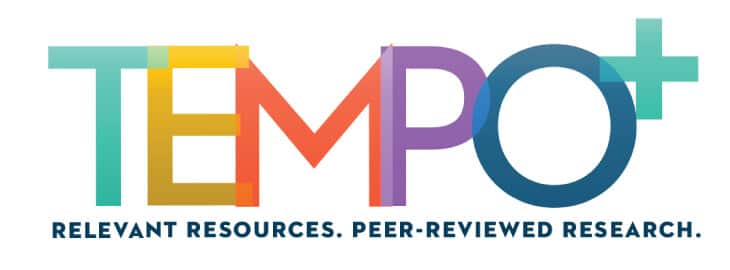By Mary Seay, Ph.D.
This commentary was originally published in 2003 in Volume XXIII, Issue 1, of TEMPO.
This century has not been very good about reading and following the script. From the rugged individualism of the 1700s and the 1800s, this century was not supposed to lead us to large scale corporations, businesses, bureaucracies, and organizations which created a centered homogeneous social system. A society where we all melt together, as Michael McGerr wrote, a smooth unfolding of organizational hegemony with fewer and fewer “individuals.”
This century has tried to do that, but as it turns out, the United States remains notably heterogeneous; corporations have failed to recast their own workers, let alone the American culture. There is a pervasive sense of self, of personal worth, a yearning for individual autonomy, the persistence of individualistic ideals, and, maybe, a little self-absorption.
This country was born of, and its foundations still rest on, a faith in personal responsibility, risk-taking, entrepreneurship, personal decision making, and the notion that one owns one’s own labor. Every breath we draw pulls air from an unbelievably diverse cultural heritage, and with McGerr, we can celebrate the fact that because of the strength of that diversity, we American individuals have been able to survive in the putatively hostile environment this century has tried to lead us into. The sanctity of the individual spirit is hanging on.
Let’s open the door to a classroom. There are indeed 22 totally individual children, but listen closely: “Every person is to open the book to page 51. Everyone will work the handout sheet which accompanies this page, you will all have the first 30 problems for homework, and everyone will work every problem the same identical way as everyone else.” And that’s only math.
Education seems to move farther and farther away from a quality, engaging, vigorous educational experience for each individual child by our misplaced dedication to the [test] scores, standardized tests, and teacher training that teaches about books and not about children.
Is it consummate arrogance to persist in placement of two or more dozen children or young adults together in a room, and to try to homogenize them by teaching them all from the same book, on the same time schedule, requiring the same output, giving them all the same input at the same time; in short, creating a pseudohomogeneous, heterogeneous classroom environment? What in the world happened to appreciating children’s differences? Where on Earth did celebrating the individual go? We want them to be individuals when they get out of school, but we do little to foster their practicing that role; there are no “two-a-days” for individualism.
A dangerously wimpy dedication to a democratic and spellbinding education has been eroded further and further as state policy and local response has created a diminution of expectations of students. Not as obvious, but to me more insidious, is the state-driven thinking that there is no room in the curriculum for intellectually stimulating discussions of ideas, contrasting viewpoints, or alternative ways of looking at a process or notion. I guess that even if there were such things in the curriculum, there would be no time for them. A parent at our parent meeting last night told me that her gifted third grader got 34 worksheets as homework in the 14 days his class was preparing for the TAAS test. I think that some of these surely must not be germane to the education of a gifted individual.
Gifted children can’t help being individuals, but their need for expressing themselves within the safety net of their mental peers is great, for gifted children are very sensitive to the jeers and taunts of age peers who cannot understand their responses, their view of the world, or the abstractions which fascinate them. The place where gifted children feel most secure is among the same kind of thinkers. In 1992, John Feldhusen and Sidney Moon wrote in the spring Gifted Child Quarterly:
Gifted students have unique learning needs that are difficult, if not impossible, to meet in heterogeneous learning environments.
(p. 63)
They need instruction that is conceptually more complex and abstract than most learners can handle. Gifted students learn better in unstructured environments and benefit from indirect teaching methods . . . Sensible grouping practices match student needs with curricular opportunities. For gifted students, sensible grouping practices provide opportunities for interaction with other gifted students in educational environments that are specially designed to meet the unique learning needs of gifted learners.
Gifted children must have a place where they are valued as individuals and the opportunity to express their individualism. They need a place with their mental peers that provides shelter, along with analytical, critical thinking, and complex activities.
It is painful to think of these children, languishing in the regular classroom where they are held back from advancing and learning all they can, missing the kind of enrichment they need. I read somewhere that it would be difficult to imagine that because a student was very good at basketball, he would be kept from playing because the others had not caught up with him. We could let him be a student-coach while the rest were catching on to the game. And, as Feldhusen and Moon (1992) wrote, it is also hard to imagine heterogeneous varsity football teams or a heterogeneous varsity band where beginning, intermediate, and virtuoso musicians marched and tried to perform together.
Our children deserve the least restrictive environment to develop their own individuality. As with special education students who need to take a step forward to achieve more and better learning, so do gifted students need to take the step forward from the regular classroom to their mental peer group. It is a core truth that the child [with special needs] and the gifted child need to be in an environment where they each benefit from their classmates. It is imperative that America cultivate our nation’s resource of intellectual potential and gain a reservoir of intellectual talent. It is imperative that we write to our Congressmen, Senators, and state legislators and exhort them to do so.
It is with a heavy heart that I sign my last column to you. I have never enjoyed so fulfilling a job as the representation of you and of the 285,000 gifted children in Texas. God speed.
Reference
- Feldhusen, J. F., & Moon, S. M. (1992). Grouping gifted students: Issues and concerns. Gifted Child Quarterly, 86, 63–67
Dr. Mary Seay, TAGT President in 1996, began her career as a classroom teacher and gifted education specialist at an Education Service Center. She left the ESC to share her expertise as a teacher of courses in gifted education at Arkansas Tech University, University of New Orleans, Sul Ross State University, Schreiner University, and Angelo State University. Mary is well-known for her dedication to kids and her wonderful sense of humor. She is the mother of many gifted kids—literally.







